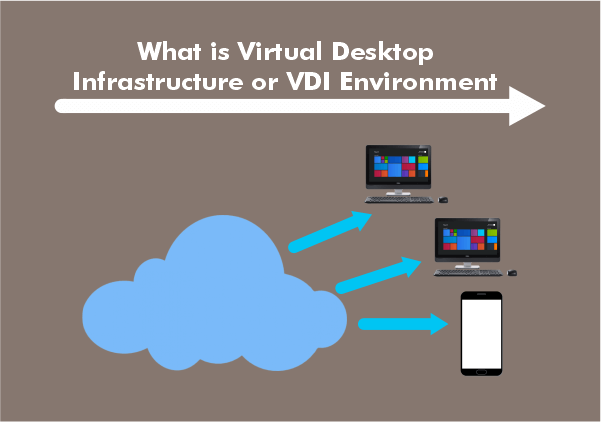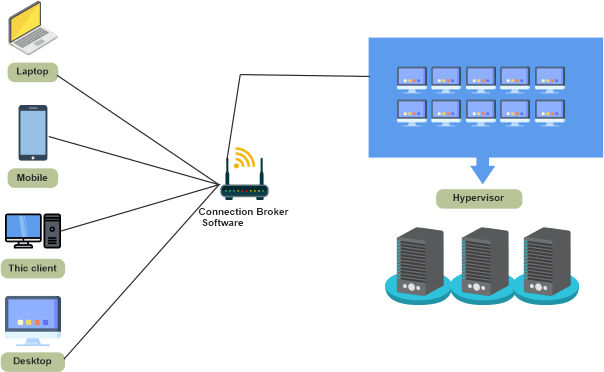What is the full form of VDIVDI: Virtual Desktop InfrastructureVDI stands for Virtual Desktop Infrastructure. In this technology, we use virtual machines to provide and manage virtual desktops. VDI provides desktop environments on a centralized server and deploys them when users ask for them. 
Working of Virtual Desktop InfrastructureIn VDI, virtual machines get servers from hypervisor segments which in turn host virtual desktops, which are accessible to users remotely from their devices. These virtual desktops are available to users and they can access them from any location or device, and all processing is the responsibility of the host server. A connection broker is a mediator, it helps users to connect to their desktop instances. A connection broker is a software-based getaway and it is a mediator between the server and the user. 
There are two types of VDI persistent and non-persistent. Each has its own benefits:
Why prefer VDI?VDI is preferred due to its numerous advantages, such as user mobility, ease of access, flexibility, and greater security. In past years, it was expensive because of its high-performance requirements. So its deployment was a challenge for legacy systems which lead to a barrier for many businesses. However, the scenario changed when it got slowly replaced with hyper-converged infrastructure (HCI), HCI provides scalability and high performance at a lower cast. What are the benefits of VDI?Due to its complexity, VDI is not preferred by every organization, it offers numerous benefits to organizations that do use it. A few of the benefits are:
What is VDI used for?VDI is suitable for all sorts of environments, there are some cases where usage of VDI is unique, which include:
What is the difference between VDI and desktop virtualization?Desktop virtualization is the type of technology that separates the desktop environment from the hardware used to access it. VDI is a subset of Desktop virtualization, Desktop virtualization has other uses too such as remote desktop services (RDS), where a shared desktop is connected to the user that runs on a remote server. What is the difference between VDI and Virtual machines (VMs)?Virtual machines are the technology that powers VDI. Machines that are created by partitioning a physical server into multiple virtual servers through the use of a hypervisor are known as virtual machines. Virtual machines have numerous applications, and running a virtual desktop in a VDI environment is one of them. How to Implement VDI?When planning for VDI deployment, larger enterprises should consider implementing it in an HCI environment, as HCI's scalability and high performance are a natural fit for VDI's resource needs. Organizations that require less than 100 virtual desktops need not implement HCI for VDI. There are other practices that should be followed when implementing VDI in addition to infrastructure considerations.
Next TopicFull Form
|
 For Videos Join Our Youtube Channel: Join Now
For Videos Join Our Youtube Channel: Join Now
Feedback
- Send your Feedback to [email protected]
Help Others, Please Share










